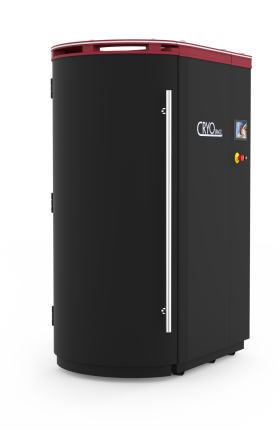

Cryospace definition how to#
It teaches us how to surrender will to heart and the power of transformation that takes place when right use of will governs and guides us in life. The Chrysoprase crystals also helps us to remain centered, strong and loving as we face life challenges and in our approach to life and love. It melts away the fear, judgment, bitterness and betrayal that has been experienced, and replaces these feelings with forgiveness, trust, compassion, sense of security, independence and cooperation. Chrysoprase is a powerful healing stone, mending broken hearts, especially for children who have been traumatized and abused. Ī very similar mineral to chrysoprase is chrome chalcedony, in which the color is provided by chromium rather than nickel.Chrysoprase is a crystal of the heart and embodies the Divine vibration of unconditional love that opens the Heart Chakra, clears the Solar Plexus, and balances the masculine/feminine energies of the Sacral Chakra. The chrysoprase and nickel silicate ore deposit in Szklary, Lower Silesia, Poland, was probably the biggest European chrysoprase occurrence and possibly also the biggest in the world. Deposits in central Tanzania have been in constant production since 1986. The best known sources of chrysoprase are Indonesia, Queensland, Western Australia, Haneti Tanzania, Germany, Poland, Russia, Arizona, California, and Brazil. In the Australian deposits, chrysoprase occurs as veins and nodules with brown goethite and other iron oxides in the magnesite-rich saprolite below an iron and silica cap.Īs with all forms of chalcedony, chrysoprase has a hardness of 6–7 on the Mohs hardness scale and a conchoidal fracture like flint. Chrysoprase results from the deep weathering or lateritization of nickeliferous serpentinites or other ultramafic ophiolite rocks. The nickel reportedly occurs as different silicates, like kerolite or pimelite (not NiO mineral, bunsenite, as was reported before). Unlike emerald which owes its green color to the presence of chromium, the color of chrysoprase is due to trace amounts of nickel compounds in the form of very small inclusions. The word chrysoprase comes from the Greek χρυσός chrysos meaning 'gold' and πράσινον prasinon, meaning 'green'. Unlike many non-transparent silica minerals, it is the color of chrysoprase, rather than any pattern of markings, that makes it desirable. Other members of the cryptocrystalline silica family include agate, carnelian, and onyx. This sets it apart from rock crystal, amethyst, citrine, and the other varieties of crystalline quartz. (However, the term prase is also used to describe chlorite-included quartz, and to a certain extent is a color-descriptor, rather than a rigorously defined mineral variety.)Ĭhrysoprase is cryptocrystalline, which means that it is composed of crystals so fine that they cannot be seen as distinct particles under normal magnification.


The darker varieties of chrysoprase are also referred to as prase. Its color is normally apple-green, but varies to deep green. Chrysoprase, chrysophrase or chrysoprasus is a gemstone variety of chalcedony (a cryptocrystalline form of silica) that contains small quantities of nickel.


 0 kommentar(er)
0 kommentar(er)
